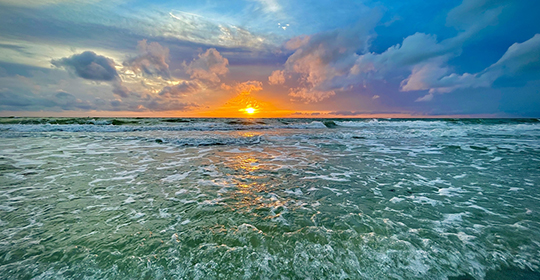Tarpon Fishing from the Beach: 7 Tips for Success in Florida
By Debbie Hanson
Jun 28, 2024
List of beach tarpon fishing tips you can use this spring in Florida. Learn about the best baits to use, how to time your trip, catch and release best practices
Tarpon fishing in Florida can be one of the most exciting and adrenaline-fueled experiences for saltwater anglers. Since tarpon can weigh over 250 pounds and are known for making acrobatic leaps when hooked, they are one of the most highly sought-after sport fish in the world. Check out these seven tips to help you successfully target tarpon from the beaches in Florida.
Know the Regulations
Before going on a fishing trip for tarpon, know the state fishing regulations. Florida has important laws regarding catch and release best practices (tarpon are exclusively a catch-and-release fishery in Florida). When fishing for tarpon anywhere in Florida, including when fishing from a beach, fish over 40 inches must remain in the water. Abide by all regulations, including gear restrictions and release guidelines.
Best Locations
Put effort into researching the best beach locations for tarpon fishing. Tarpon (often referred to as the “silver king”) can be found along both the Atlantic and Gulf coasts of Florida. Look for beaches that are close to deep channels, around inlets, or passes where tarpon are known to school up during their seasonal migrations. Places like Miami, Clearwater Beach, Boca Grande Pass, and Sanibel Island are often cited as top beach fishing destinations for tarpon.
Timing is Everything
When it comes to beach fishing for tarpon, seasonal timing is crucial to success. Tarpon are most active when water temperatures are between 75- and 90-degrees F, which tends to be from April through September. Large schools (occasionally numbering up to 100 fish or more) migrate through Florida’s warm coastal waters in search of food and suitable spawning grounds during the spring and summer. Time your beach fishing trips based on these water temperatures and a strong moving tide for your best opportunities.

Tackle and Gear
When it comes to the best rod and reel for beach tarpon fishing, heavy tackle is essential. Use an 8-foot heavy-duty spinning rod paired with a large 7000 or 8000 series reel that has high line capacity and a quality drag system. Spool the reel with 30 to 50-pound test braided fishing line. As for terminal tackle, rig up with heavy fluorocarbon or monofilament leader (around 80-pound test). You will also need to have a selection of non-stainless, non-offset circle hooks in sizes ranging from 5/0 to 10/0 (the size of the natural baits you use will dictate the hook size). Bigger baits, like mullet or ladyfish, will require the use of a larger circle hook. With smaller baits, like pinfish or threadfin herring, you can use the smaller hooks.
Natural Bait and Lures
When beach fishing for tarpon, natural baits are often the most effective. Some of the best choices include mullet, ladyfish, pinfish, crabs, and threadfin herring. Rig your natural baits using a circle hook (as mentioned in the section above) to increase hook-up ratios while minimizing potential harm to the fish. For anglers who prefer to use artificial lures, large swimbaits and plugs can also entice strikes from hungry tarpon patrolling the beaches.
Techniques and Strategies
If you want to know how to find tarpon from the beach, look for baitfish scattering along the troughs or silver flashes on the surface of the water. If you don’t see either of those signs, try casting your bait or lure around the edges of sandbars or deep channels. Be prepared to adjust your tactics based on changing tides, currents, and weather conditions. When a tarpon strikes, let the fish make its initial runs and jumps while maintaining steady pressure on the line and not reeling against the drag. One tip to help keep a tarpon hooked when it makes acrobatic jumps is to point your rod tip towards the fish – this is often referred to as “bowing to the king.”
Respect and Conservation
When targeting tarpon from the beach, it is important to use conservation-minded fishing practices. For example, use non-offset/non-stainless circle hooks with natural baits to prevent tarpon from swallowing the bait and hook, limit the amount of time it takes you to reel in the fish by using heavy enough tackle, don’t remove the fish from the water or bring it up onto the beach (wade into the water and take photos of the fish in the water), and handle the fish as little as possible when removing the hook. By treating these incredible sport fish with respect and practicing conservation-minded fishing techniques, you can help ensure that we’ll have healthy tarpon fisheries for future generations.









